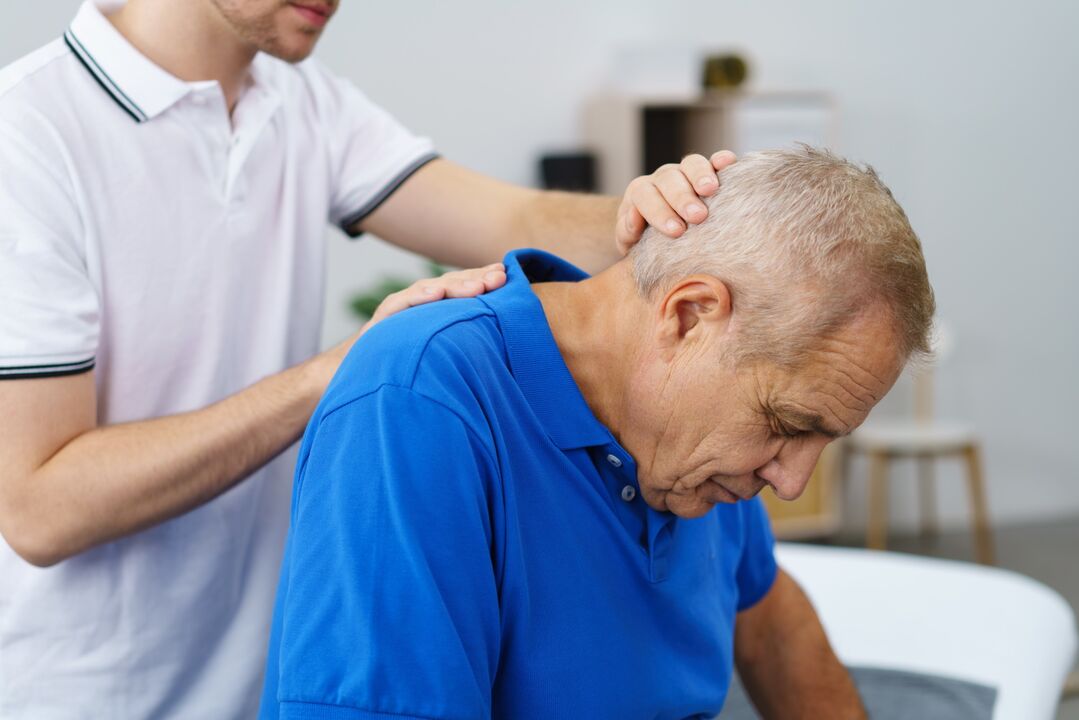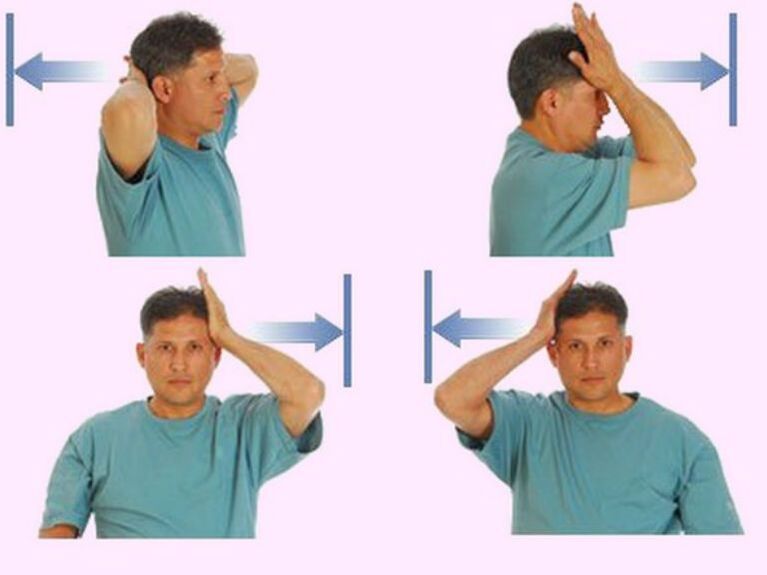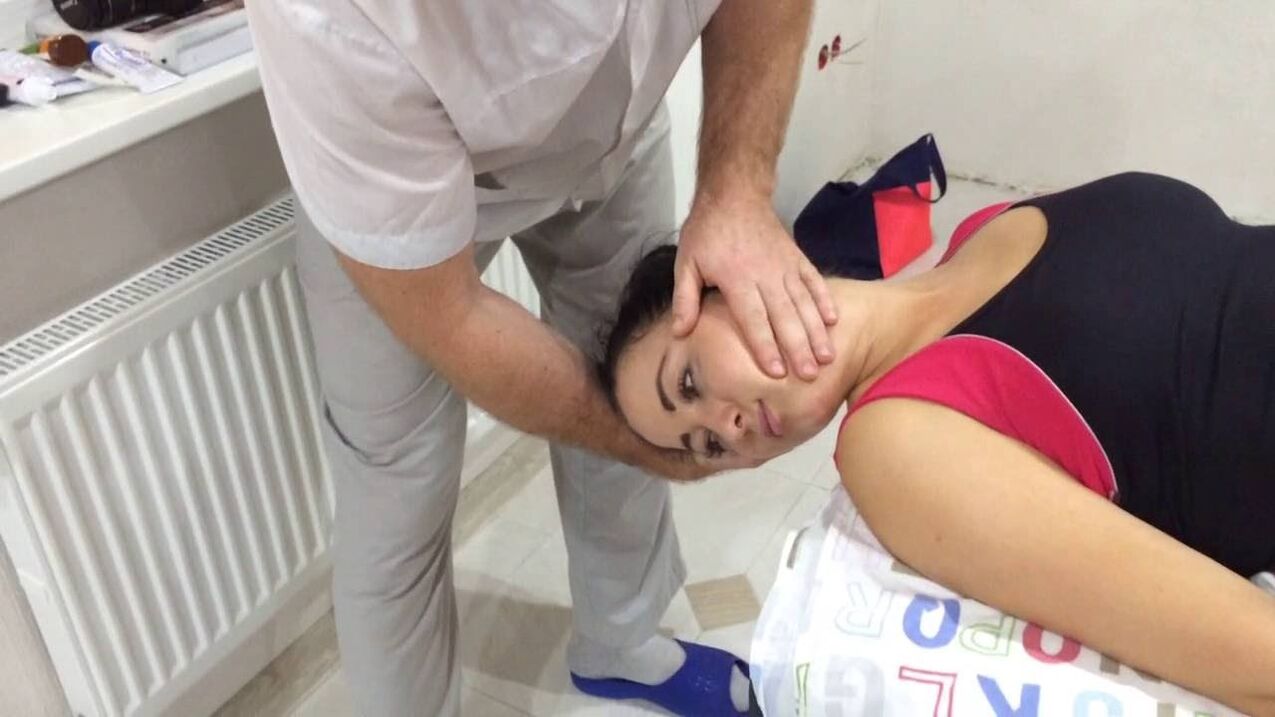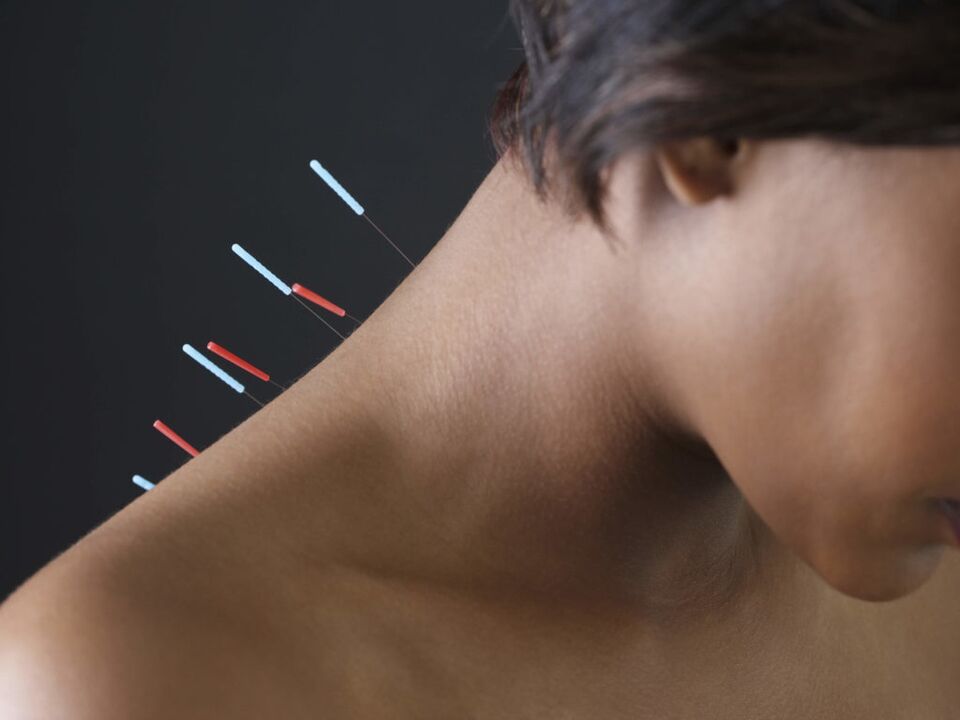
Osteochondrosis of the cervical spine is a pathological process in which the nutrition of the discs is disturbed, which leads to their gradual damage. With the further progression of the disease, the intervertebral discs lose their shape and do not perform their main functions. The spine's ability to withstand physical stress is lost.
Treatment methods
Effective treatment of cervical osteochondrosis consists of an integrated approach to the disease, combining medication and physiotherapy. If these methods do not achieve a positive effect, surgical intervention is resorted to.
Conservative treatment consists of taking nonsteroidal anti-inflammatory drugs, vitamins, and muscle relaxants. The aim of the former is to reduce inflammation and pain. If the pain is mild, topical ointments or gels help. The use of vitamins improves blood circulation, which leads to better nutrition of the brain.
But all medicines will not be enough if the cause of osteochondrosis lies in a person's lifestyle and remains unchanged. If the disease is caused by constant computer work, some physical exercises to warm up the neck should be included in the work rhythm.
Physiotherapy methods give good results:
- electrophoresis;
- water procedures;
- massage;
- physiotherapy.

Discomfort is significantly alleviated by hirudotherapy and manual therapy.
During sedentary work, regular self-massage is recommended as a prophylaxis, to disperse stagnant blood and ensure an influx of nutrients to the brain. In addition, you should eat regularly, get enough rest at night and control your weight.
Osteochondrosis of the cervical spine is well corrected in the initial stage, before the appearance of vertebral artery syndrome and cardialgia.
The aim of treatment is to eliminate pain, restore blood supply to the brain and slow down the progression of the disease. The patient is treated by a neurologist. Conservative therapy is as follows:
- Applicationnon-steroidal anti-inflammatory drugslocally and system-wide. Ointments, gels, tablets and injections treat the pain of osteochondrosis well.
- It is used in the acute stage of the disease, which is accompanied by severe painparavertebral block- local application of drugs (anesthetics and corticosteroids).
- Drug treatment is a combination of nonsteroidal anti-inflammatory drugs, anticonvulsants,Group B pain relievers and vitamin complexes.
- In case of severe pain that affects the patient's nervous and mental state, sedatives can be prescribed. In case of long-lasting pain (more than 4 weeks), they are replacedantidepressants. These drugs make it possible to stabilize the patient's mental state.
- In the acute phase, nerve root compression can be reducedmuscle relaxants.
- Prescribed to maintain cerebral circulationvasodilators, as well as tools that improve the metabolism of nervous tissue).
Due to the ineffectiveness of conservative treatment lasting several months and the progression of the disease, surgical intervention is sometimes resorted to.
Medical therapy
Medical treatment of osteochondrosis of the cervical spine includes the use of various drugs.
NSAIDs (NSAIDs)
Nonsteroidal anti-inflammatory drugs (NSAIDs) are used as symptomatic treatment to relieve inflammation and relieve pain during exacerbations.
In osteochondrosis of the cervical spine, taking NSAIDs usually does not exceed 6 weeks. Medicines are only symptomatic, and the pain may return after the end of the course. Often, NSAIDs are used in combination with antispasmodics, which help relieve muscle tension in the paravertebral zone.
Anesthetics
Pain and muscle tension are effectively eliminated by the local administration of anesthetics. Blockades are widely used from a combination of anesthetics and corticosteroid drugs, which have an anti-inflammatory effect in addition to an analgesic effect.
As a local anesthetic, a solution is used that contains substances that restrain the impulse flow in irritated nerve endings and prevent it from passing through innervated areas.
Hormones
Therapy with glucocorticosteroids can adversely affect the production of your own hormones. Therefore, modern medicine is much less likely than before to use drugs of this group in the treatment of cervical osteochondrosis, and only when there are serious indications.
When ingested, hormonal drugs block the inflammatory process in the cells.
Important!With long-term use, glucocorticosteroids contribute to the destruction of cartilage, so they must be combined with chondroprotectors.
Medicines containing corticosteroids quickly relieve pain, but at the same time they have a negative effect on many internal organs. The course of hormone treatment rarely lasts longer than 7 days, as bone loss and osteoporosis may occur with longer use.
Local irritants
As a result of the destruction of the intervertebral discs, the displacement of the vertebrae and the inflammatory process, the blood vessels in the tissues of the body become narrowed. You can improve blood circulation with the help of warming, locally irritating ointments.
When using such funds, due to the stimulation of the nerve endings, the blood flow in the problem area increases, which helps to improve the nutrition process of the tissues. After applying the ointment, the treated area of the skin will redden due to the active influx. Since these drugs have a tonic effect, it is recommended to use them during the day.
Among the warming ointments, the most popular product is based on nicotinic acid butoxyethyl ether. Alternatively, capsaicin and dimethyl sulfoxide ointments are used..
In addition to ointments, special patches impregnated with active substances are used as local irritation. So, for example, the composition of the well-known pepper patch contains hot pepper extract, belladonna, and lanolin oil. These ingredients have an irritant effect, relieve muscle spasm and increase local blood circulation. At the same time, the oxygen transport of cells and tissues is accelerated, as a result of which the pain disappears.
Chondroprotectors
There is an active debate about these drugs. Not all doctors use chondroprotectors in the treatment of osteochondrosis. These drugs contain glycosaminoglycans and chondroitin sulfates, which form the structural basis of intervertebral discs. It is believed that chondroprotectors prevent the destruction of the cartilage of the spine and joint surfaces.
The composition of such preparations may include chondroitic acid, mucopolysaccharides, animal cartilage, glycosaminoglycans, etc.
Reference.Some experts believe that the effect of these drugs is insignificant, although it differs from the placebo effect, and the achieved result cannot be compared with high prices.
Preparations that improve blood microcirculation
This group of drugs promotes dilation of blood vessels. Medicines improve blood microcirculation, eliminate violations of venous outflow, normalize metabolic processes, stimulate regeneration and increase the frequency of nerve impulses. As a result, the blood circulation is normalized, the metabolic processes in the soft tissues improve, the degree of swelling decreases, and brain activity is restored.
vitamins
In case of osteochondrosis, the attending physician may prescribe the intake of individual vitamins or vitamin complexes. In general, special attention is paid to B vitamins (B1, B6 and B12). Their intake increases the nutrition of nerve fibers, supports metabolic processes in the cartilage tissue and gives flexibility, improves blood circulation and the functioning of the central nervous system, and stimulates metabolic processes.
In addition to B vitamins, it is extremely important to supply the body with ascorbic acid. With its regular intake, the regeneration process of bone and cartilage tissue is improved, toxins are eliminated, and the processes of carbohydrate, protein and mineral metabolism are regulated. It can partially reduce the need for additional intake of vitamins B1, B2, A and E.
Surgical intervention
Indicated in the absence of a visible effect in the treatment of the disease with conservative methods, as well as in the development of complications.
Indications for surgical treatment of cervical osteochondrosis:
- due to spinal stenosis, herniated disc - "pinching" of the spinal cord and/or nerve roots, causing pain, cramps, weakness or numbness;
- cervical spondylolisthesis - a condition in which the vertebrae move relative to each other along the horizontal axis, slip during movement and put pressure on the nerve roots and spinal cord;
- disc herniation - depending on the severity of the symptoms, the severity of the patient's condition and the effectiveness of conservative therapy.
Massage
Massage is one of the main treatment methods. In this case, it is not only a useful, but also an indispensable procedure. You must first complete a vocational course. In order to achieve the greatest effect, it is desirable to perform at least 10 sessions. In the case of cervical osteochondrosis, massage can achieve the following effects:
- pain relief and muscle spasm relief;
- reduction of edema;
- muscle strengthening;
- restoration of normal tone;
- improving blood supply and nutrition in the intervertebral discs;
- increased conduction of nerve impulses;
- improvement of metabolic processes;

After a professional course, you can do simple tricks at home on your own. The peculiarity of the procedure for cervical osteochondrosis is the passive stretching of the muscles from the overstretched position in combination with massage elements. The technique should be used after the spasmodic muscles have been warmed by baths, hot compresses or kneading.
For self-massage, we use the same techniques as in the professional version. These include pounding, kneading, point blows, taps, and rubbing. The massage is performed with warm hands. Massage oil should be used to improve gliding. The order of the technique is as follows:
- Caress;
- rubbing off;
- kneading;
- tapping.
End the self-massage with caressing. It is important that there is no severe pain during the procedure.
Reference.In addition to traditional massage for osteochondrosis of the cervical spine, other techniques are also used, such as acupressure or vacuum massage. In the second case, medical banks or special vacuum devices are used.
Massage is very useful in cervical osteochondrosis. However, there are factors that are absolute contraindications:
- blood diseases;
- osteomyelitis;
- thrombosis;
- malignant or benign tumors;
- aneurysms;
- active stage of tuberculosis;
- the presence of many warts and birthmarks on the body;
- spider veins on the back.
There are also temporary contraindications:
- snow;
- infectious diseases;
- exacerbation of chronic processes.
exercise therapy
If the disease has already developed and been diagnosed, after eliminating the pain and neurological symptoms with the help of drug therapy, the first step is a physiotherapy course, as an integral part of the complex treatment. The moderate loading of the neck muscles in remission contributes to the strengthening and formation of the muscle ligament that holds the intervertebral discs.
The main way to prevent cervical osteochondrosis and weakness of the neck region is to strengthen the neck muscles. This helps with therapeutic exercises. To achieve tangible results, you need to perform at least 2-3 exercises 2-3 times a day. Starting position - sitting with a straight back.
- Exercise number 1. Bend your head slightly forward and place your hand on your forehead. Then press your palms to your forehead and without moving your neck, hold the position for 30 seconds.
- Exercise number 2.Tilt your head back and slowly turn left and right for 1 minute. This exercise improves blood flow in the veins.
- Exercise number 3.At the same time, raise your shoulders, try to bring them to your ears, and then lower them to their original position. Then alternately - one shoulder down, the other up. The total duration is 2 minutes.
- Exercise number 4.Bring your palms together above your head with your elbows out to the sides. Press your palms firmly together for 2-5 seconds, then relax your hands. Repeat 3 times.
- Exercise number 5.Gently tilt your head forward - on exhalation, back - on inhalation (3 times).
The gymnastic complex ends with a self-massage - rub the neck with circular, rotating movements.

Manual therapy
A set of non-drug therapeutic and diagnostic techniques aimed at eliminating certain diseases of the spine.
Reference.They usually do about 10 sessions at 2-day intervals. After the first procedures, the patient may experience mild pain, which is considered normal. But if the pain does not go away in the future, the course should be stopped. Constant pain indicates either the low professionalism of the specialist or an incorrect diagnosis.
During the first visit, an experienced osteopath always performs a diagnostic palpation of the neck region. The doctor determines the most painful places, assesses the condition of the muscle tissue and the skin. The success of further treatment depends on a properly performed examination.
The session begins with warming up the muscles and a light massage. The doctor then stretches the muscles, reducing spasms in the cervical segment. At this stage, the patient should not feel pain. After that, the therapist goes directly to the manipulation.
This is the most painful part of the procedure. The doctor presses the cervical vertebrae with considerable effort and tries to push them back. During such manipulations, patients often hear a scary crack, but this is considered normal. At the end of the session, the chiropractor performs a soothing massage.
Immediately after training, sudden movements, tilting and bending of the head should be avoided. If possible, it is better to lie down for half an hour.

Important!A doctor using manual therapy techniques must master them perfectly in order to exclude harm to the patient.
Acupuncture
Acupuncture affects the body in a certain area by inserting needles into biologically active points. In this case, a response occurs, which is expressed in the controlled production of hormones that regulate metabolic processes and the state of immunity. Thanks to this, inflammatory processes are actively suppressed.
The therapy is effective in cervical osteochondrosis. As a result of the procedure, the vessels in the neck expand, blood flow improves, oxygen and nutrient supply to the brain increases, headaches, tinnitus, and dizziness disappear, and the anti-inflammatory hormone cortisol flows into the bloodstream. increase.

Folk remedies
Traditional medicine has many recipes that can relieve pain and unpleasant symptoms of cervical osteochondrosis. However, these recipes alleviate the condition, but do not eliminate the cause of the disease, so other measures cannot be dispensed with.
Compresses and tinctures are the most popular remedies. They warm up the muscles, improve blood circulation, and relieve pain.
Recipe 1.A mixture of pork fat, horse chestnut, turpentine, agave and vodka. Cooking method:
- 3 tablespoons of horse chestnut;
- 100 g of American agave;
- camphor oil - 50 ml;
- purified turpentine - 30 ml;
- vodka - 200 ml;
- unsalted lard - 50 grams.
Grind and mix the ingredients, then put it in a dark place for 9 days. To use, apply a thin layer on brown bread and apply to the painful area. If a burning sensation occurs, the poultice is removed. After the discomfort disappears, you can repeat the procedure.
Recipe 2.Tincture marigold.
Take a glass bottle, pour 50 g of calendula into it and pour a cup of camphor spirit. Then add a glass of cologne and a glass of vodka. Place the sealed jar in a dark place and let it sit for a few weeks. Rub the resulting tincture on the sore spot.
Osteochondrosis is easier to prevent than to treat. All the results achieved in the fight against the disease are reduced to zero if the patient continues to follow the same lifestyle: he does not exercise much, does not play sports, and gains excess weight. This again can lead to pathologies of the intervertebral discs and exacerbation of osteochondrosis.





































